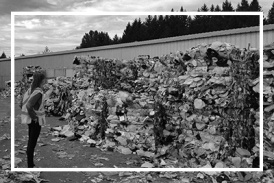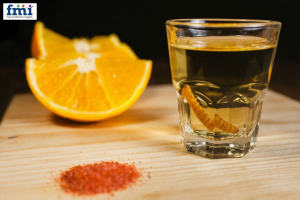Mezcal Market to Hit USD 1.3 Billion by 2035 Amid Soaring Global Demand for Artisanal Spirits | FMI
The Mezcal market is experiencing strong growth, driven by rising consumer interest in artisanal and premium alcoholic beverages.
Mezcal, a traditional Mexican spirit distilled from various agave species (excluding blue agave), is deeply rooted in cultural heritage and artisanal craftsmanship. While Oaxaca remains the epicenter of production, the beverage is gaining worldwide traction, particularly in the U.S., Canada, Japan, and across Europe. The surge in demand has led to the emergence of several craft distilleries globally, underscoring a larger trend toward premiumization and authenticity in the alcoholic beverages market.
Your Guide to Market Intelligence – Download a Sample Copy: https://www.futuremarketinsights.com/reports/sample/rep-gb-5067
Craft and Premium Mezcal Leading Market Expansion
The increasing demand for premium artisanal mezcal is shaping the future of the global market. Consumers, especially millennials and Gen Z, are opting for small-batch, craft distilleries that emphasize heritage, transparency, and authenticity. Craft mezcal sales in the United States have experienced a noticeable uptick, fueled by growing awareness of the Oaxacan mezcal production tradition and the unique characteristics of agave varietals.
As a result, top mezcal brands driving market growth are focusing on storytelling, regional identity, and traditional distillation techniques that appeal to conscious consumers. The demand for organic mezcal is also on the rise, with producers investing in sustainable agave farming and eco-friendly packaging innovations to strengthen their brand positioning.
Changing Consumer Preferences and Market Dynamics
Consumers are increasingly drawn to the differences between mezcal and tequila, appreciating mezcal’s smoky character and artisanal production process. The growing consumer preference trends for mezcal over tequila indicate a broader shift toward unique, experiential drinking options.
Moreover, the impact of sustainability on mezcal production is becoming a central theme. Brands are adopting regenerative agriculture, limiting overharvesting of wild agave, and improving worker welfare. These measures resonate with modern consumers who are prioritizing sustainability, origin transparency, and ethical production.
Competitive Landscape and Strategic Developments
The competitive landscape of key mezcal manufacturers is marked by strategic partnerships, innovation in branding, and diversification of product portfolios. Several producers are launching flavored variants, limited editions, and celebrity-endorsed mezcal products to attract younger demographics and enter new markets.
Meanwhile, regulations continue to evolve. The impact of regulatory changes on mezcal labeling and denomination of origin standards is prompting companies to invest in certification and traceability systems. This shift aims to protect cultural heritage and ensure authenticity in the face of rising global demand.
Slide Tray Box Market to Hit USD 29,452.7 Million by 2035, Driven by Aesthetic Appeal and Innovation | FMI
A New Crumbl Dessert For Dad This Father’s Day
DevLand Academy Brings Free Coding and Innovative Learning to Every Child
Kalendarium
Więcej ważnych informacji
 Jedynka Newserii
Jedynka Newserii

 Jedynka Newserii
Jedynka Newserii

Handel

Ze względu na różnice w cenach surowce wtórne przegrywają z pierwotnymi. To powoduje problemy branży recyklingowej
Rozporządzenie PPWR stawia ambitne cele w zakresie wykorzystania recyklatów w poszczególnych rodzajach opakowań. To będzie oznaczało wzrost popytu na materiały wtórne pochodzące z recyklingu. Obecnie problemy branży recyklingu mogą spowodować, że popyt będzie zaspokajany głównie przez import. Dziś do dobrowolnego wykorzystania recyklatów nie zachęcają przede wszystkim ceny – surowiec pierwotny można kupić taniej niż ten z recyklingu.
Przemysł spożywczy
Rośnie presja konkurencyjna na unijne rolnictwo. Bez rekompensat sytuacja rolników może się pogarszać

Rolnictwo i żywność, w tym rybołówstwo, są sektorami strategicznymi dla UE. System rolno-spożywczy, oparty na jednolitym rynku europejskim, wytwarza ponad 900 mld euro wartości dodanej. Jego konkurencyjność stoi jednak przed wieloma wyzwaniami – to przede wszystkim eksport z Ukrainy i niedługo także z krajów Mercosur, a także presja związana z oczekiwaniami konsumentów i Zielonym Ładem. Bez rekompensat rolnikom może być trudno tym wyzwaniom sprostać.
Transport
Infrastruktury ładowania elektryków przybywa w szybkim tempie. Inwestorzy jednak napotykają szereg barier

Liczba punktów ładowania samochodów elektrycznych wynosi dziś ok. 10 tys., a tempo wzrostu wynosi ok. 50 proc. r/r. Dynamika ta przez wiele miesięcy była wyższa niż wyniki samego rynku samochodów elektrycznych, na które w poprzednim roku wpływało zawieszenie rządowych dopłat do zakupu elektryka. Pierwszy kwartał br. zamknął się 22-proc. wzrostem liczby rejestracji w ujęciu rocznym, ale kwiecień przyniósł już wyraźne odbicie – o 100 proc.
Partner serwisu
Szkolenia

Akademia Newserii
Akademia Newserii to projekt, w ramach którego najlepsi polscy dziennikarze biznesowi, giełdowi oraz lifestylowi, a także szkoleniowcy z wieloletnim doświadczeniem dzielą się swoją wiedzą nt. pracy z mediami.









.gif)

 |
| |
| |
|